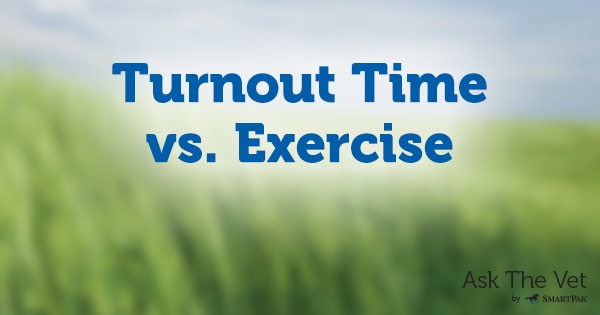Turnout Time Vs. Exercise - Pasture Time for Conditioning

My horse lives in a big pasture and runs around a lot with his friends in the winter. Does that mean he’s getting plenty of exercise, or should his spring conditioning routine still start as if he’s had no exercise at all? – from horsechannel.com
Buy a lottery ticket, because this is your lucky day! I just happened to run across a study by Patricia M. Graham-Theirs and L. Kristen Bowen from the Equine Studies Department at Virginia Intermont College called “Improved Ability to Maintain Fitness in Horses During Large Pasture Turnout” published in the Journal of Equine Veterinary Science Volume 33, Issue 8, Pages 581-585, August 2013.
Their objective was to compare horses’ maintenance of fitness during extended periods of no forced exercise with that after stall confinement. To do this they divided horses into three groups:
1) pasture turnout or P, 2) stalled and exercised or E, and 3) stalled with no exercise or S. The researchers looked at quite a wide variety of things, including body fat, bone mineral content, bloodwork, temperature, weight, body condition score, and heart rate. They even attached GPS units to the horses’ halters to estimate distance traveled. Each horse also performed a standardized exercise test at the beginning and end of the 14-week study.
Interestingly, the P group traveled a greater distance daily compared with the E group, which were exercised for one to two hours per day, five days per week, at the walk, trot, and canter under saddle! Bone density was also greater for the P group, with heart rates and temperatures being comparable between the P and E groups. This data suggests that the stalled with no exercise group lost fitness, whereas the pasture group remained as fit as the stalled and exercised group. So access to pasture does appear to help maintain bone strength and exercise fitness ability!
That said, I still encourage you to put together a conditioning plan for your horse that addresses his cardiovascular system, provides strength training, and includes suppling exercises, gradually increasing the duration, intensity, and frequency of the physical fitness work to best prepare him for the season ahead.